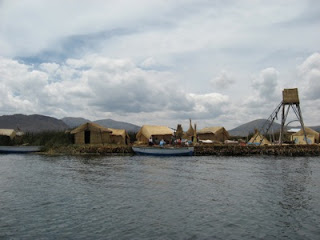The tour group had a varied group of people, including a family with two kids, 4 Argentinian girls on a South American trip, a Venezuelan guy finishing his South American trip, a French guy from my hostel who has been volunteering in South America, another Argentian guy from my hostel, Jorge, who is also on a South American trip and a few other people.


The drive upto Chivay was interesting in itself, going over a pass that is 4910m high (which makes it the highest point I have been on land) and through a rather sparse game reserve with the endangered vicunyas (a llama like animal in photo 1, domesticated llamas in photo 2), which are renowned for their wool. Apparently 1 meter of vicunya wool is worth 2000 US $! In the Inca times, vicunya wool could only be used by royalty.


The town of Chivay is quite picturesque, although there is not much to do there. We did manage to find a Irish pub that had a free pool table though - but other than that there is really not much to do here other than sleep and get ready for a trek in the canyon or a tour of the canyon.

And despite FIFA's recent moves to stop competitive football matches at high altitudes, it was great to see club football being played in Chivay. Not sure who the teams were, or what the scoreline was, but the orange team was definitely the stronger team - even though they did not manage to convert any of their 10 odd chances at scoring for the 10 minutes I watched the match.





The trip to the canyon was really early in the morning (leaving Chivay just after 6am), and being so high up in the mountain, it was quite cold too! The canyon has been farmed through terraces for over 1000 years, and it is a stunning landscape of desert, fertile farms, rivers and snow capped peaks. After seeing this canyon, I am quite keen to revisit the plans to visit the Fish River Canyon in Namibia that Jay and I hatched in late 2006.


We were very lucky with Condors - as we got there we spotted two of them sitting on the rocks just below the highest viewing point. After about 10 to 15 minutes they took off, gliding along the thermals of the valley. It was an absolutely stunning sight - and considering condors are scavengers, their flights represent absolute freedom - the ability to fly just because they feel like it, not because they need to.





































